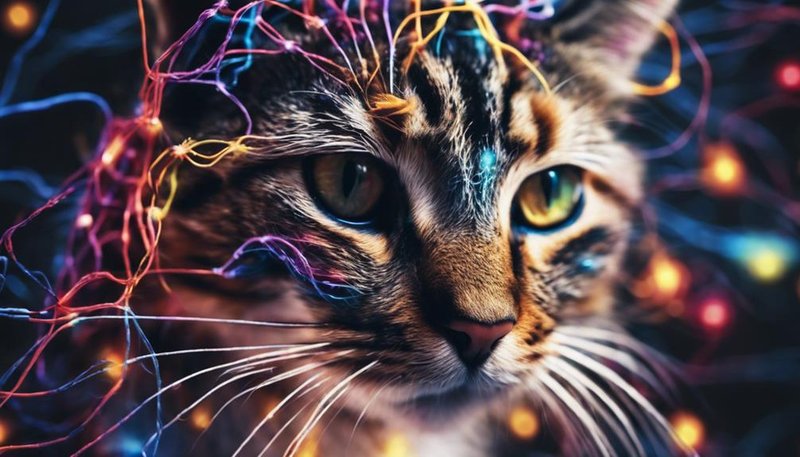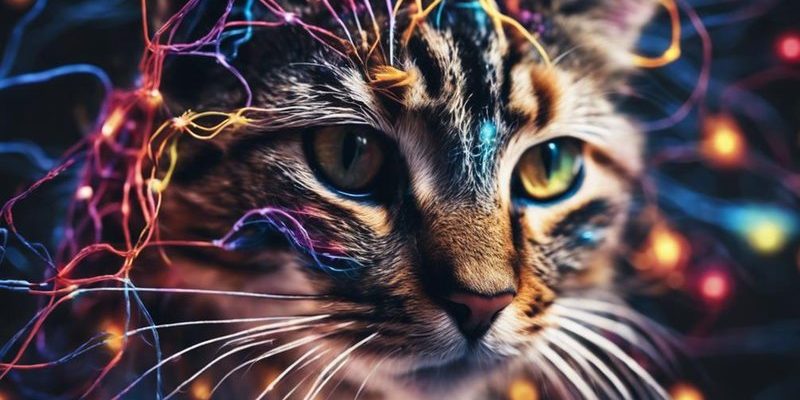
Understanding a jungle cat’s brainpower isn’t just about knowing what makes them tick. It’s about appreciating their survival skills, social interactions, and problem-solving techniques. These traits paint a picture of an animal that’s not only instinct-driven but also capable of learning and adapting. So, sit back and let’s explore the cognitive landscape of these marvelous felines, from their hunting techniques to their social behaviors.
What Makes Jungle Cats Unique?
Jungle cats, or *Felis chaus*, are not your average kitties. Found in regions of Southeast Asia, the Middle East, and parts of India, they blend beautifully into their surroundings. Their tawny coats are perfect for camouflage, helping them sneak up on prey. But it’s not just their appearance that sets them apart—it’s their brainpower, too.
One thing you might notice about jungle cats is their adaptability. They thrive in a wide range of environments, from wetlands to dry grasslands. This ability to adjust to different habitats shows their intelligence. Animals that are adaptable can learn from their experiences and modify their behaviors accordingly. For example, jungle cats have been observed changing their hunting strategies based on the type of prey available in their area.
Additionally, these cats are highly territorial. They establish home ranges and mark them with scent, which is a clever way to communicate their presence to others. This territorial behavior reflects their understanding of social dynamics, as they need to be aware of other cats in the area—both rivals and potential mates.
Cognitive Skills in Hunting
When it comes to hunting, jungle cats are like little strategists. Their hunting style combines stealth, patience, and a dash of creativity. Typically, they rely on stalking their prey, often using tall grass and other natural cover. But there’s more to it than just sneaking up.
Jungle cats have been observed using different tactics depending on the situation. For instance, if prey is plentiful, they might stalk slowly, taking their time to plan the perfect ambush. On the other hand, if food is scarce, they might take risks, being more aggressive to catch something. This ability to adapt their hunting techniques based on the circumstances showcases their cognitive flexibility.
Moreover, jungle cats often engage in play behaviors that can help them hone their hunting skills. Just like a child playing make-believe, juvenile jungle cats might pounce on leaves or chase after insects, refining their reflexes and learning to coordinate their movements. So, the next time you see a cat playing, remember—it’s not just fun; it’s practice for the real world!
Communication Skills
Jungle cats are not just solitary hunters; they also have a rich social life. Their communication skills are impressive, involving a mix of vocalizations and body language. They can produce a variety of sounds, from growls and hisses to soft meows and purrs. Each sound serves a specific purpose, whether it’s to warn off intruders or to call to potential mates.
But their communication doesn’t stop at sounds. They also rely heavily on scents. Scent marking is crucial for territorial claims. By rubbing against trees and bushes, they leave their scent for others to smell. It’s like sending a text to other jungle cats: “This is my turf.” This sophisticated method of communication reflects their cognitive mapping abilities, where they keep track of their territory and the locations of other cats.
You might be wondering how this all ties back to intelligence. Well, effective communication requires not just instinct but the ability to interpret and respond to social cues. Jungle cats show remarkable social intelligence by navigating complex interactions with others, whether they’re competing for territory or looking to mate.
Learning and Memory
Memory plays a crucial role in the life of a jungle cat. They need to remember where they found food, the locations of water sources, and even the territories of rival cats. Research has shown that cats, including jungle cats, have excellent spatial memory. This skill is essential for survival in the wild.
Let’s break it down a bit. If a jungle cat successfully hunts in a particular area, it’s likely to return to that spot in the future. Their ability to recall past experiences and make decisions based on them demonstrates a high level of cognitive function. It’s like when you remember where you stashed your favorite snacks—you go back there time and again because you know it’s a good spot!
Additionally, jungle cats can learn from both their successes and failures. If a hunting technique doesn’t work out, they can adjust their strategy for next time. This kind of trial and error learning is a hallmark of intelligent behavior. They’re not just reacting to their environment; they’re actively engaging with it, thinking ahead for better outcomes.
Social Behavior and Group Dynamics
While jungle cats are primarily solitary animals, they do exhibit social behaviors, particularly during mating season or when raising young. Female jungle cats often have overlapping home ranges, allowing them to interact and sometimes hunt together. This social structure can enhance their survival chances, as hunting in pairs increases the likelihood of capturing prey.
Interestingly, these interactions can vary. Some female cats are quite social, while others prefer solitude. This difference suggests a level of intelligence where they can assess their situations and choose the best approach for their needs. It’s like choosing whether to work on a group project or tackle a solo assignment—you weigh the pros and cons based on your skills and preferences.
Moreover, mothers show remarkable intelligence when raising their young. They must teach their kittens essential survival skills, like how to hunt and navigate their territory. This process requires patience and a deep understanding of their environment. It’s a testament to their cognitive abilities that they can pass on this knowledge to the next generation.
Challenges and Conservation
Unfortunately, jungle cats face numerous challenges in the wild, including habitat loss and hunting pressures. As human populations expand, these felines often find their homes encroached upon. This not only threatens their survival but also their ability to thrive as intelligent creatures.
Conservation efforts are crucial for protecting jungle cat populations. By preserving their habitats and working to reduce human-wildlife conflict, we can ensure that these intelligent animals continue to roam their natural environments. Education plays a key role here—understanding their cognitive abilities can foster empathy and a desire to protect them.
You might wonder why this matters. Protecting jungle cats isn’t just about saving a single species; it’s about maintaining the balance of ecosystems. Every animal plays a role, and when one struggles, it affects the entire web of life. By safeguarding jungle cats, we help preserve the intricate connections within nature.
So, how smart is a jungle cat? The answer is pretty impressive. These fascinating felines showcase a variety of cognitive abilities that highlight their intelligence and adaptability. From their hunting skills and effective communication to their social behaviors and impressive memory, jungle cats are more than just wild cats—they’re complex creatures navigating the challenges of their environment.
Understanding the cognitive abilities of jungle cats deepens our appreciation for them and underscores the importance of their conservation. The next time you come across a jungle cat, remember that you’re looking at an extraordinary animal with a mind as sharp as its claws. Let’s work together to ensure that these clever creatures continue to thrive in the wild.

